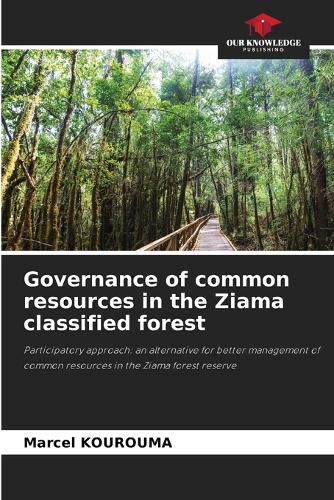Readings Newsletter
Become a Readings Member to make your shopping experience even easier.
Sign in or sign up for free!
You’re not far away from qualifying for FREE standard shipping within Australia
You’ve qualified for FREE standard shipping within Australia
The cart is loading…






This title is printed to order. This book may have been self-published. If so, we cannot guarantee the quality of the content. In the main most books will have gone through the editing process however some may not. We therefore suggest that you be aware of this before ordering this book. If in doubt check either the author or publisher’s details as we are unable to accept any returns unless they are faulty. Please contact us if you have any questions.
The management of common resources requires the effective involvement of all stakeholders, in order to avoid all forms of opposition. The Ziama massif, the subject of our study, has been a classified forest since 1942. It is located in the south-eastern part of Guinea and is one of five forests in the region. Among these forests, only the Ziama massif represents a level of degradation of 27%. Considered the weakest of all Guinea's forests, the Ziama massif was classified as a biosphere reserve by UNESCO in 1981. Given its ecological wealth, concerted management of its resources to maintain its status as a climatic regulator is an imperative. Except that sincethe classification to the present day, it has been an area of conflict between various players, including the State, local communities and non-natives. The Guinean state, having inherited the management methods imposed by the colonial power, continues to seek unilateral management of the forest's resources, while excluding the local communities. As a result, conflicts are multiplying.
$9.00 standard shipping within Australia
FREE standard shipping within Australia for orders over $100.00
Express & International shipping calculated at checkout
This title is printed to order. This book may have been self-published. If so, we cannot guarantee the quality of the content. In the main most books will have gone through the editing process however some may not. We therefore suggest that you be aware of this before ordering this book. If in doubt check either the author or publisher’s details as we are unable to accept any returns unless they are faulty. Please contact us if you have any questions.
The management of common resources requires the effective involvement of all stakeholders, in order to avoid all forms of opposition. The Ziama massif, the subject of our study, has been a classified forest since 1942. It is located in the south-eastern part of Guinea and is one of five forests in the region. Among these forests, only the Ziama massif represents a level of degradation of 27%. Considered the weakest of all Guinea's forests, the Ziama massif was classified as a biosphere reserve by UNESCO in 1981. Given its ecological wealth, concerted management of its resources to maintain its status as a climatic regulator is an imperative. Except that sincethe classification to the present day, it has been an area of conflict between various players, including the State, local communities and non-natives. The Guinean state, having inherited the management methods imposed by the colonial power, continues to seek unilateral management of the forest's resources, while excluding the local communities. As a result, conflicts are multiplying.